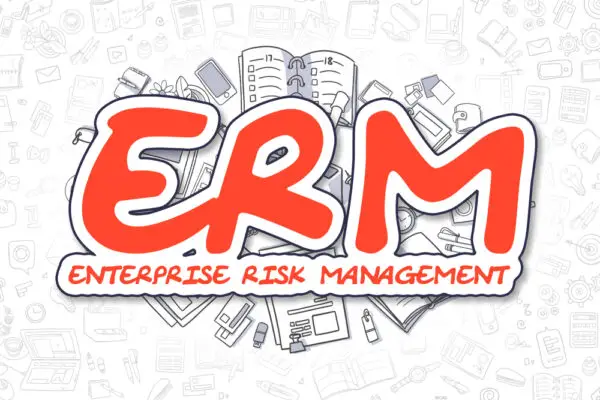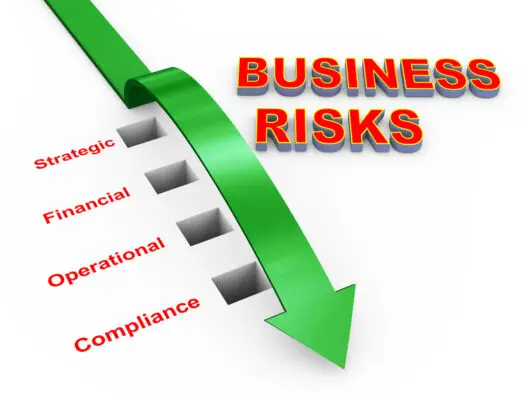Most people have heard of the term “risk management,” but few know what it actually entails. Risk managers identify, assess, and mitigate risks to protect businesses and individuals from losses. In other words, they help companies and people make informed decisions about the risks they face.
Risk managers can address various risks, including financial, operational, reputational, and compliance risks. Financial risks include market risk, credit risk, and liquidity risk. Operational risks include supply chain disruptions, natural disasters, and cyberattacks. Reputational risks include things like negative media coverage and customer churn. Compliance risks include things like regulatory changes and data breaches.
Risk managers use a variety of techniques to measure and manage risk. Some of these techniques include creating risk models, conducting stress tests, implementing controls, and buying insurance. Risk managers also develop contingency plans so that their companies can quickly recover from unforeseen events.
Every organization has some risk associated with it, and professionals who measure and manage risk work to keep it as low as possible. Risk managers are responsible for assessing and mitigating risks to their organization, whether it’s a financial or safety hazard.
These professionals use their knowledge of different areas, such as business, finance, engineering, and statistics, to assess risks and create plans for minimizing them. They may work in various industries, from banking to healthcare to manufacturing. No matter the industry, these professionals are vital in helping organizations protect themselves against potential pitfalls.

The Benefits of Hiring A Risk Manager
There are benefits to hiring a risk manager. Perhaps the most obvious benefit is that they can help your company avoid costly mistakes. By identifying and assessing risks upfront, you can make informed decisions about which risks are worth taking and which should be avoided. This can save your company a lot of money in the long run. Th risk manager is part of senior management in an organization.
Another benefit of hiring a risk manager is that they can help improve your company’s decision-making process. Risk managers use data and analytics to identify trends and patterns that decision-makers may not know. This information can be used to make better decisions about strategic initiatives, investments, and partnerships.
Finally, having a risk manager on staff can give your company a competitive advantage. In today’s uncertain world, investors and customers are increasingly looking for companies with strong risk management processes. By hiring a risk manager, you can show them that you’re serious about managing risk and protecting their interests.
Risk management is a technique for assessing and controlling risks in organizations. Often the risk comes from financial uncertainty, legal and technological issues, strategic management errors, accidents, or natural disasters. A risk management program is important for organizations because they understand their risks. Risk Management looks at the relationships between unforeseen events and their impact on an organizational strategy.
Running a business involves various risks. Some potential hazards are destructive to businesses, while others cause serious damage requiring costly repairs. While business is highly risky, CEOs are positioned to anticipate and prepare whatever size business they have.
What is Risk Management?
Risk managers are involved in identifying the risks that are associated with business and their management. Effective risk management is a way of controlling future consequences as much as is practical through action proactively instead of reactively. Thus effective risk management can reduce both possible risks and impacts.
Importance of Risk Management
Risk management is crucial as it empowers a business to identify potential risks effectively. When a potential threat is identified, then mitigation can begin easily. A risk management framework is also incorporated to help the firm develop sound decisions, especially for operational risk.
For businesses, evaluating risk is the best way to plan for any eventuality that could block their progress or growth. When companies evaluate their plans for handling possible threats before developing structures to deal with them, they increase their chances of success.
Good risk management practices help to protect an organization’s reputation, finances, and employees. In addition, risk management helps organizations comply with laws and regulations. Effective risk management is a critical part of any successful organization.

Risk Management Structures
Risk management systems can do more than simply identify risks. A good risk management system should also assess uncertainty and predict its effects. The result is either acceptance or dismissal of risk.
Accepting or rejecting risks depends upon what level of tolerance businesses have set out. Generally, risk management structures are designed to support other risk mitigation strategies in business. Among these are planning, organization, budget, and cost management.
Identify existing risks
Risk detection is usually performed through a brainstorming process. Businesses gather workers for review to identify different sources of income. Then the risk will be placed on priority, the risk. Because there are no effective means for reducing the risk a company can face, the risks are prioritized to ensure they are addressed quickly.
Response to Risks
When developing contingencies, businesses need problem-solving to deal effectively with risk. This resulted in a detailed plan executed immediately when the need arose. A business organization can overcome the obstacles to growth by managing risks quickly and efficiently. Risk awareness sessions also inculcate a risk-aware culture in an organization and identify risk factors when risks occur.
Risk Analysis Process
Risk Analysis is a quantitative method of solving problems using several assessment tools to identify and rank hazards to assess and manage them. Let me start with an analysis of potential risks.
Assess the risks
Problem-solving typically encapsulates identifying problems and then identifying a solution. Generally, a firm must understand the causes of risks by asking, “How could this affect the business?”.
Develop preventive mechanisms for identified risks
The ideas found useful in minimizing threats are compiled here into several tasks and then into planned contingencies for future use. When a risk occurs, the plan is implemented.
Develop an appropriate response
What measures are needed to mitigate identified risks of recurring and recurrence for businesses? How can one prevent such problems?
Identifying risks
When risks are realized, an adequately prepared business will reduce the loss of profits, productivity, and the negative impact on customers. For many companies, identifying and risk assessments potential risks is essential to strategic business planning.
Risk is identified by various means. Strategies used for identifying these risks require an extensive analysis of specific business operations. Most businesses have preventable, strategic, and external threats easily addressed by accepting transfers, reducing, or eliminating them. A professional risk management specialist helps businesses determine the risks covered in their insurance policies.
Insuring against risks
Insurance is a principal security of minimizing risks, and Almost all risks are covered. Fire insurance for businesses occupiers of office space, owned outright or leased, is imperative and should be the priority of all businesses.
Product liability insurance in service businesses should never be considered necessary. Several risks are unquestionably very high, such as the risks of a person handling funds or performing financial accounting duties at accounts payable or receivable. Special insurance companies offer financial protection if embezzled funds are stolen or used fraudulently for fraud.
Avoiding the Function Trap
The cognitive trap will remain unless the management system encourages a rich discussion of risks. As strategic risk can be quite unpredictable—even well documented—companies tend to label and compartmentalize it, particularly across business function lines. Banks often separate their risk management into separate groups.
Other companies compartmentalize their business processes to handle ” brand risk,” reputation risk,” supply chain risk,” human resource risk,” IT risk,” and financial risk. This organizational silo disseminates knowledge and responsibility for the effective management of risk.
Technology risks
Generally, technology risks are caused by an electrical failure. Integrated generator systems are the most reliable power source for lighting and other functions. Manufacturers use several auxiliary generators to maintain operations until utilities are restored. Computers can be maintained with powerful backup battery systems.
Power outages could occur during a lightning strike (or randomly), ensuring critical business systems are provided with surge protection to prevent lost data. Creating online backup systems for the data protection of important documents.

Human Risks
Alcoholism can be a major problem for employees at work. Employees who suffer from addiction to alcohol should receive treatment if needed. Some policies will give a portion of treatment costs.
Protecting yourself and others from theft, embezzlement, and other criminal acts at work is easy. The use of double signatures is essential to prevent eavesdropping and fraud. A strict accounting system can uncover unauthorized transactions or misappropriations. An extensive background check will be done if someone’s employment history is suspicious.
Strategic risks
Stratified risk does not have any negative impacts. Banks and credit unions are exposed to risk by providing consumer loans, while pharmaceutical companies are exposed to risk by developing or introducing novel drugs.
All these risks posed by the strategy are intrinsically linked to business objectives. When framed properly, accepting strategy risks can lead to extremely profitable operations. Companies exposed to considerable strategic risks can minimize risk by building infrastructure supporting high-risk projects.
Location Risks
Some risk locations for an enterprise include fire damage in the vicinity, floods and storms, hurricanes, tornadoes, earthquakes, or other natural events. Employees must know the street which leads to and from the neighbourhood at each side of the company’s location. People should have sufficient fuel to drive out or to the other side of the road. Property and Casualty insurance often helps transfer the risk to third-party companies.
Managing Strategy Risks
Despite their different structures and roles, each approach encourages employees to re-evaluate and discuss the current assumptions. Our conclusions – “one size is not all” – are contrary to the efforts of regulators or associations to standardize this function.
Independent experts
Many companies face significant internal risks when they are working on long and complex development projects. However, as most risks arise due to compliance with natural laws, the risks change slowly over time. In such organizations, risk management is done on a project basis.
In addition, organizations can establish an independent risk review panel that reviews project engineers’ risk assessment and mitigation decision-making process. This ensures the periodic evaluation of the risks throughout the development period.
Embedded experts
Financial services companies face specialized challenges due to volatile dynamics in asset markets and potential effects from decisions based on decentralized trading and investment managers.
Investment banking risks change dramatically depending on the size of the market movements. Risk management typically requires embedded experts within organizations to monitor and influence the risk profile and collaborate with line managers.
Facilitators
Most organizations operate in stable technology and market conditions with relatively predictable customer demand. The risks are mainly caused by seemingly unrelated operations choices that accumulate and remain invisible in a complex organization. The lack of specialized personnel in a firm can lead to the development of a relatively limited central risk-management group based on operational management.
Managing the Uncontrollable
The first steps for building a robust risk control system must be understood to distinguish among the different types of risks faced. Our fieldwork shows risks can be divided into three categories. Risks can occur in almost every type of business and may be deadly to business strategy or survival.
External risks. The third class of risks can usually be reduced and avoided through ways used for prevention and strategy risks. External risk is often unrestricted within an organization and should be identified, measured and assessed for possible impact on the business in a timely fashion. Sometimes external risks can be sufficiently immediate for managers to take advantage of these risks.
Wargaming
Wargaming measures the firms’ vulnerability to disruptive technologies and changes to competitor strategy. In a wargame, a company assigns three or four teams to develop plausible long-term strategies that existing or possible competitors can implement within 3-5 years if the strategy is effective.
The teams then discuss how clever competitor strategies may be exploited. The procedure is intended to help leaders overcome bias by refusing evidence indicating that their beliefs are contrary to what they believe, including the possibility that competitor actions could interfere with their strategy.
Scenario planning
It’s ideally suited for long-term analysis, which generally lasts 5-10 years. Initially developed by Shell Oil in 1960, scenario analysis has evolved as a systematic tool to define plausible futures state in the world.
Participants examine politics, economics, technology, social, regulations, and environmental forces and select several drivers – usually four—with the greatest impact on the business. Some companies use expert advice on their boards to advise themselves on significant trending topics that should not be considered in their scenarios.
Tail-risk stress tests
Stress testing is an important method of measuring the underlying effects of specific variables that could affect a business. It is not possible to predict the exact timing of a stress test. Bankers and other financial institutions often employ stress testing techniques for analyzing the effects on trading position and investor behaviour. However, stress tests’ benefits depend largely on the hypothesis that variables may be more susceptible to change.
Understanding the two categories of risk
Typical company risk consists of three types, each involving different risk-management techniques. Risk prevention arises in an organization and is managed through the values and standards of Compliance.
Strategy and external risks require different methods to encourage managers to share risks and identify cost-effective ways to minimize risk and reduce its consequences. Risks arise in a company which produces no strategic benefit. The risk is taken as a means of superior strategic return. External, uncontrolling risks are considered risk mitigation.
Category I: Preventable risks
There are external risks within an organization which can be controlled by the organization and should not be ignored. Examples may include risks associated with a person’s unauthorized, illegal, unjustified, unprofessional and inaccurate behaviour and risks associated with failures of routine operations.
In addition, companies must have tolerances for defects or mistakes that would not cause serious problems and would cause too much unnecessary cost for fully eliminate them. Companies should try and mitigate this risk because it does not give them significant advantages.
Category II: Strategy risks
A business willingly accepts risks and generates superior returns from its strategies. Banks often take credit risks by loaning money or taking risks in research and development. Strategy risk is different than preventable risk due to its inherently negative nature.
Risk management is important when taking out a high expected return strategy. Without BP’s newest project, drilling in the Gulf of Mexico has deemed a major risk and an important resource because of its potential oil extraction.
Conclusion
Businesses face many risks, and effective risk management is essential to the success of any organization. There are various ways to manage risk, and the best approach depends on the specific risks faced by the company. One common method is to transfer risk to another party, such as through insurance. Another approach is to avoid risky activities altogether.
Finally, businesses can also take steps to mitigate risks by investing in safety equipment or establishing procedures to minimize the chance of accidents. By taking a proactive approach to risk management, businesses can protect themselves from potential losses and ensure long-term success.
Risk managers play an important role in today’s business world. They help companies avoid costly mistakes, improve decision-making, and gain a competitive advantage. If you’re considering hiring a risk manager for your business, there’s no time like the present!

Chris Ekai is a Risk Management expert with over 10 years of experience in the field. He has a Master’s(MSc) degree in Risk Management from University of Portsmouth and is a CPA and Finance professional. He currently works as a Content Manager at Risk Publishing, writing about Enterprise Risk Management, Business Continuity Management and Project Management.

